| The Crew of Apollo 1 |
| The ancient civilization of Greece believed that the God Apollo rode across the heavens in a chariot with the sun, now Apollo had new semi-gods called astronauts. These new chariots of Apollo belonged to the space age and were technological wonders containing miles of wiring and self sufficient life support systems and they were due to circle the Earth and one day fly to the moon. Now three men lay amid these new marvels atop their rocket during final tests, completely separate from their own world except for the crackling line of communications that carried their voices to the men in the control room. All was set for Apollo 1 to thunder into orbit in only a few weeks time and herald in the new moon landing program. Apollo 1's launch was planned for the last quarter of 1966 and up to 14 days were allowed to test the spacecraft but numerous problems with the Command Module resulted in the launch being re-scheduled for 21st February 1967. Perhaps with hindsight the engineers could have used this time to improve the Command Module's hatch, a hatch that many astronauts didn't feel easy about due to the length of time required to open it. Even better would have been to omit the Block I spacecraft from the manned schedule altogether as Deke Slayton said, "We shouldn't have been flying the Block I. We were going too fast." Three astronauts would give their lives in this head long race to the moon, perhaps with the memory of Gagarin beating Shepard into space NASA didn't want to come second to the Soviets again. Recent history had shown that the Russians were able to pull off a spectacular propaganda stunt in space just before the Americans could launch their own space missions. |
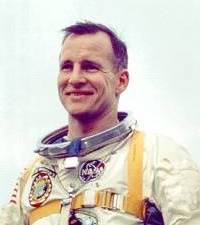 |
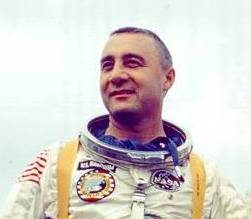 |
 |
| Gus Grissom Apollo 1 Commander Born in Mitchell, Indiana, Grissom was 40 years old when he died. |
| Ed White Apollo 1 Senior Pilot White was born in San Antonio, Texas, and at the time of his death he was 36 years old. |
| Roger Chaffee Apollo 1 Pilot Coming from Grand Rapids, Michigan, Chaffee was 31 when he was killed in the Apollo 1 fire. |
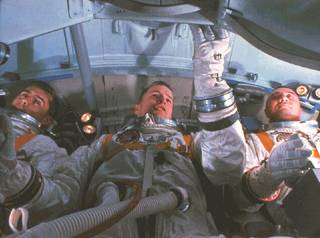 |
| Here the crew participate in a simulation inside the command module. This is the position that the three men would have been in at the start of the fire, Chaffee is on the left with White in the centre and Grissom is in the commander's couch on the right. The Apollo Block I Command Module had two hatches that had to be opened and they were located behind Ed White's head. This photograph was taken on 19th January 1967, little did anyone know that only eight days later all three men would be killed in a tragic accident on top of their rocket during a pre-launch test of their AS-204 spacecraft. |
| On January 27th 1967, the three crew men of Apollo 1 lay on their couches inside their spacecraft during a test on launch pad 34. They were only weeks away from launching into space and opening the manned phase of the new Apollo moon landing program. At around 6.31pm, after many interruptions in the test, a voice was heard over the communications line, "Fire, I smell fire," seconds later there was another cry of, "Fire in the cockpit." The interior of the spacecraft quickly turned into an inferno and in a matter of seconds the internal pressure caused the side to rupture sending thick black smoke rushing out and thwarting any speedy rescue attempt by the launch pad technicians. When the extreme heat and dense smoke had diminished in intensity enough to allow the hatch to be opened, all three men inside the spacecraft were found dead. The air in the environmental control system had been replaced by toxic fumes and all three died of carbon monoxide asphyxiation. Grissom was once asked what he thought was the most dangerous part of a spaceflight to which he replied, "I guess the part between lift-off and landing." Now three astronauts were dead, not killed in space but during a ground test that many considered non-hazardous. |
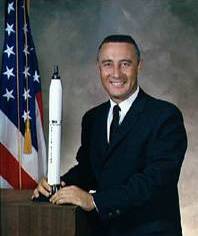 |
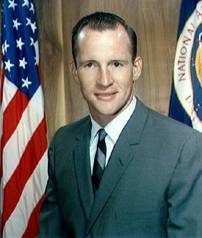 |
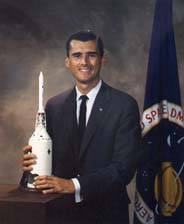 |
 |
 |
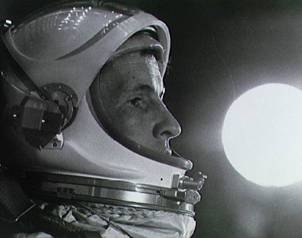 |
 |
| Grissom's first spaceflight was the 15 minute sub-orbital Mercury Redstone 4 mission on 21st July 1961. |
| White seen during training for his first spaceflight Gemini IV. |
| Chaffee in mission control during the Gemini III mission. |
| Grissom's second spaceflight was the three orbit mission of Gemini III on 23rd March 1965. |
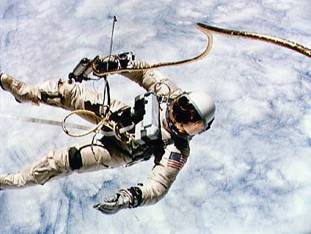 |
| Slayton on Grissom "Gus Grissom was probably my best friend of all the astronauts, he was one of the guys Bob Gilruth and Chris Kraft liked too. He was a good pilot and a good engineer and he was willing to get in there and do whatever job was necessary." |
| Borman on White "Ed was a West Point man and duty, honour, courage weren't just words to him, they were him. He was one of my closest friends." |
| Cernan on Chaffee "Roger Chaffee had never flown in orbit but had so impressed our bosses that they assigned him a coveted spot on the first Apollo. Roger was one of my closest buddies, he had a great sense of humour. We shared a dream, we were in a special way, brothers." |
| In June 1965 Ed White featured in some of the most spectacular NASA photographs ever taken when he became the first US astronaut to walk in space during Gemini IV. |
 |
| Back to Index |
 |
| Chaffee was the youngest member of the Apollo 1 crew but he had the determination and the ambition to go all the way to the lunar surface, he had said, "You'll be flying along some nights with a full moon. You're up at 45,000 feet. Up there you can see it like you can't see it down here. It's just the big, bright clear moon. You look up there and just say to yourself: I've got to get up there. I've just got to get one of those flights." |
| On to Apollo 1 Fire |
| Roger Bruce Chaffee USN |
| Virgil Ivan "Gus" Grissom USAF |
| Edward Higgins White II USAF |
| January 27th 1967 |
| Apollo 1 |
 |
| Grissom, White and Chaffee seen inside the Apollo spacecraft during training for their mission. |
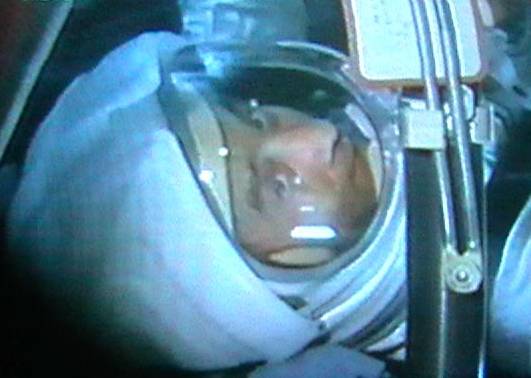 |
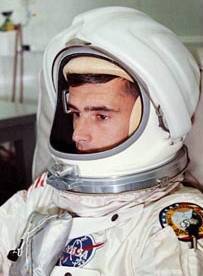 |
 |
| Copyright 2001-2009 by Robert M. Southall |